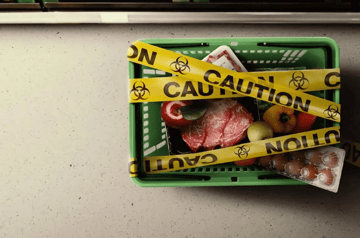Consumers are willing to invest in products from transparent companies that promote food safety best practices. Integrating food safety into your brand can protect your customers while building trust.
When it comes to food data, consumers have voiced their opinions loud and clear: they demand truth and transparency about the products they buy. Many brands are developing messaging to address this shift in the market, taking advantage of the premium customers will pay for insight into their food; Response Media’s 2017 study found that over half of consumers would pay anywhere from 50% to 100% more for transparent fresh and packaged food products.
Providing nutritional facts and ingredient lists are an important first step in fostering consumer trust and loyalty, but what consumers want when it comes to transparency is far more complex. Over 90% of consumers want visibility into a company’s ingredient sourcing, production/manufacturing, as well as shipping/handling, and the majority of them want this information before purchasing a product. The quest for transparency along the supply chain reveals a more fundamental understanding amongst consumers of safety risks and a desire for more security when it comes to their food. Consumers are looking for brands they can trust to prioritize safety, in addition to holistic information about products.
In order to create a brand with a reputation as a food safety leader, you can start by implementing the latest best practices and making sure you’re FSMA compliant. Here are some strategic pointers that will help you position your company as “best-in-class”:
1. Align and Amplify: Food Safety and Sustainability Leaders
There are many organizations, experts, and activists working hard to keep food safety top-of-mind at a local and national level. Promote their work and incorporate their leadership into your own messaging. Aligning with food safety thought leaders will help ensure you’ve got your pulse on the future, not just status quo. We recommend keeping an eye on the FDA’s recently launched a New Era of Food Safety campaign in particular, which is sure to shape the next phase of food safety and transparency.
2. Create a Food Safety Communications Plan
Food safety communications is high stakes. Ensure your brand is prepared and proactive when an incident does occur by having a plan in place for internal and external communications. Timely, clear, and properly-deployed information can help you minimize risks and exposure when your brand needs to issue a product recall or withdrawal. Develop an automatic chain of communication in advance so that transparent messaging is deployed in real-time when an incident occurs. Practice mock recalls and identify any weaknesses that could lead to problems during a live event. How you handle food quality incidents can be a defining moment for consumers, so make sure you’re prepared to move swiftly and efficiently.
3. Engage in Consumer Education
Empower your customers to become your partners in food safety by educating them on the food safety risks they can mitigate in their day-to-day lives. It’s clear that customers are eager to engage on the topic of food safety, so make your brand is positioned as the go-to source for quality information. Participate in campaigns led by food safety education leaders like the Partnership for Food Safety Education, which promotes accessible solutions for safer home cooking.
4. Publish Data on Your Food and Business
Nothing will make your food safety branding more credible than being transparent about your business and the products you sell. Publishing accurate, specific facts about your supply chain is a smart way to address consumers’ quest for reliable food safety information. Create package labeling that tells a story about your product ingredients and their journey, in addition to nutritional and ingredient facts. You can learn about implementing GS1 standards to gain clearer insight into your supply chain from leaders like IPC/Subway. Make sure to leverage your digital presence by painting a broad picture of the processes you’ve implemented to safeguard your customers.
5. Invest in Food Safety Technology
Food Safety isn’t a passing novelty; it requires commitment and investment in the tools that will help you achieve your business goals. With the FoodLogiQ Connect platform, you can manage food safety incidents, track end-to-end data on your supply chain, and automate withdrawal communications to create and execute your food safety plans at scale. Transparency has become status quo, and consumers more eager than ever to invest in ethical food companies; taking the lead on food safety can help you build a lasting brand. Schedule a demo of FoodLogiQ Connect to learn how we can help.
Other posts you might be interested in
View All Posts
Food Safety
9 min read
| March 7, 2017
Food Safety: A Key Benefit of Traceability
Read More
Food Industry
15 min read
| August 15, 2023
Navigating Beyond 'Poisoned': Charting the Course for Food Safety Advancements
Read More
Food Industry
6 min read
| June 14, 2018

